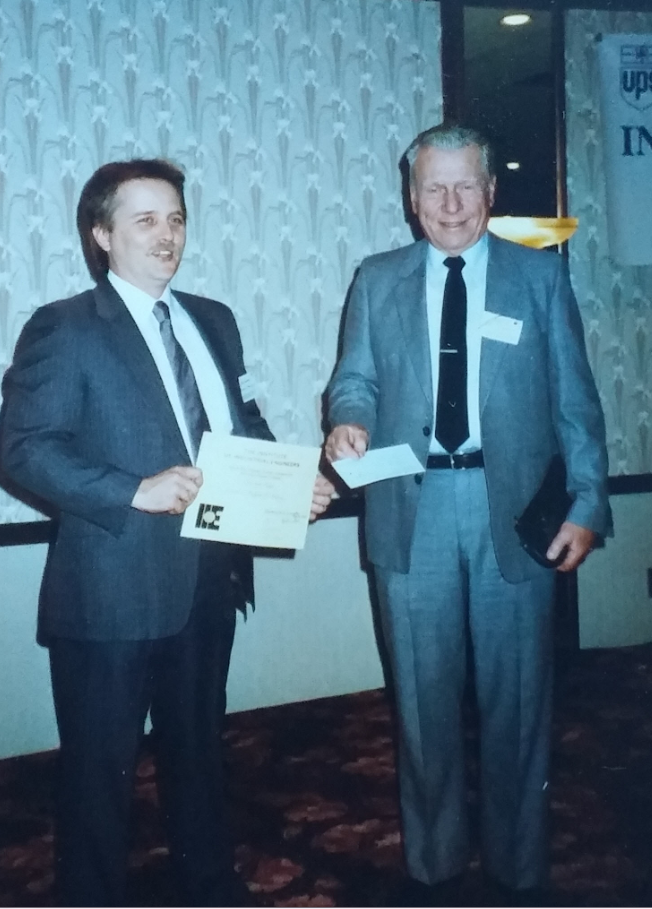By Jennifer Erb
In
2016-09-122016-09-12https://wvuieleaders.com/wp-content/uploads/2016/09/[email protected]WVU IE 200px200px
200px200px
 200px200px
200px200pxRichard Kinney came to WVU from Parkersburg Community College (now WVU-Parkersburg). The Associate Dean in the College of Engineering wouldn’t admit him. Rich persisted, and after three meetings,the Associate Dean said he would be admitted if a department would accept him. The Industrial Engineering department agreed to accept him because his brother was a successful student in the program.
Rich was married and had a daughter when he came to WVU. Until his senior year, Rich didn’t see his family very much as they remained in Parkersburg. In his senior year, Rich was given an internship in Parkersburg so he would be able to see his family each week. His internship was with the Sheltered Workshop in Parkersburg, and Rich turned this internship into the best one in his senior class. In fact, his presentation of the project which improved production processes for the workshop ended up winning second place at the IIE Regional Conference.
When Rich graduated, he had three job offers. He accepted a job with NAVAIR Human Systems Integration Division because he loved the idea of working with aircraft. Rich’s first assignment was the test and evaluation of the F/A-18 Night Attack aircraft, the first integrated night vision system for Navy/Marine aircraft.
Over the years, Rich worked on development, test, evaluation and accident investigation of a number of Naval/Marine aircraft, manned and unmanned systems. He has been to sea, traveled the world working with other foreign military but perhaps the most visible of these was the technology upgrade of all electronic systems for the Presidential helicopter (Marine 1) in which he was hand selected to lead.
Rich is especially proud of his work on the V-22 Osprey. This is a Vertical Take Off and Landing (VTOL) aircraft that has become an important component in the Marine and Air Force arsenal. The V-22 was a tremendous challenge requiring over 9 years of test and evaluation. The first aircraft delivered to the Marine Corps was in 2000. The Osprey is now being used around the world in both military and humanitarian operations
Currently Rich is the Branch Head of the Unmanned Aircraft Systems engineers that test and evaluates the integration of electronic systems. Some of the work he is doing deals with the growing cyber security threat to our nation’s flying defense. Rich is also a mentor for many of the new engineers hired by NAVAIR.
While Rich’s career path is not a usual one for Industrial Engineers, he feels that his background has been excellent preparation. “I learned subjects such as budgeting, project management, cost analysis, and leading a project team in my IE courses,” Rich says. “I also learned how to see things as systems not just as components. I can also cross disciplines. But more important, I gained an appreciation of and how to use new technologies.”
Richard M. Kinney
Present descending to 1990